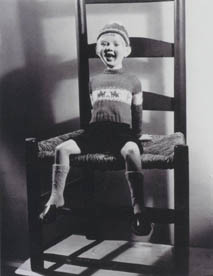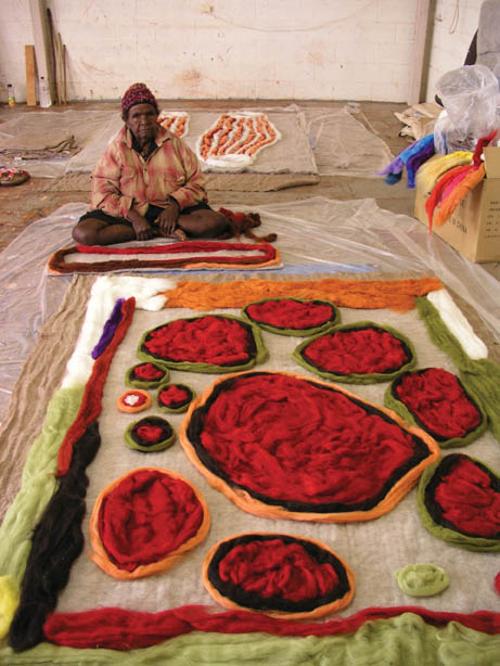
This exhibition, which was produced as a partnership between Monash University Museum of Art (MUMA) and Campbelltown Arts Centre, presents compulsive, visionary works from Outsider Artists. With the gaining momentum of regional arts, it is a timely consideration of marginalisation. Just as 'Campbelltown' no longer conjures images of mullets, forearm tattoos and suburban desolation, this insightful show is a demystifying exploration of 'outsider art' as curators Glen Barkley and Peter Fay trace the work of international artists alongside their New Zealand and Australian counterparts.
There's something very compelling about this show. Unsurprising really, considering the Outsider's certain monopoly in art, with both romantic and bohemian celebrations of the artist's 'outsider' status. Yet the work in Without Borders illuminates the art of 'proper' Outsiders in a remarkable way. The show also goes beyond merely pigeonholing this art as an impoverished copy of 'real' art. Barkley and Fay go to great length to demonstrate it's actually quite the opposite.
Rolfe Hattaway serves as an especially intriguing example. A life shrouded in speculation and ending in institutionalisation in 1930s New Zealand, Hattaway's story has an almost fictive quality. With vitrines of cryptic pencil drawings and mysterious plans for public works, Hattaway's work is seductively obscure. However, Barkley reminds us that these artists are more than just historical novelties. Hattaway's contact with New Zealand modernist Theo Schoon at Avondale Hospital saw his work enter wider circulation. With the incorporation of Hattaway's motifs by Schoon and later by Gordon Walters, Hattaway's influence on New Zealand Modernist aesthetics is silent yet tangible.
The variety of artforms also testifies to the sophistication and complexity of Outsider Art displayed in Without Borders, with work spanning painting and drawing to sculpture and video. This also adds to the curatorial richness of the show which confidently draws rich links between the work of contemporary practitioners and historical content.
Assisted by clear exhibition design and resolved display, the deft curation diffused what could potentially have been an overly museological display. Yet, some artwork looked suspiciously like contemporary art and the comparison to the work of contemporary artists was tempting. Judith Scott's obsessively string bound artworks tested the vigour of Claire Healy and Sean Cordeiro, whilst the acidic texta of Amy Szostak recalled the slick infancy of emerging artist Tom Polo. Yet the compulsive labour and elusive simplicity of the artwork prevented any didactic comparison instead proposing a spectrum of creative investigation.
The presence of video-based work was both surprising and mesmerising. Animated works were particularly powerful, resonantly combining emotive content with only slight technological mediation. Particularly touching was the work of Thanh Diep. Born in Vietnam with cerebral palsy, her lithe animations were soundtracked by the artist's voice synthesis machine. Contrasting droning vocals with jittering, emotional abstraction, Diep's brand of minimal, abstract animation was both enticing and deeply affective.
In many ways Without Borders provided an insight into fecund cultural territory. Far from patronising museum displays of finger painting and errant linework, the artworks' compulsive ferocity makes most art look pallid. Obsessive and evasive in equal proportion, the integrity of the artwork comes from its almost confessional nature. Whether compelled by religious fervour, like Howard Finster, who signs his dioramas 'By Howard Finster, Sent from God' or by private fantasy like Morton Bartlett who photographed his 'perfect family' of mannequins, this art could easily be dismissed as creepy.
However, this would be too convenient a conclusion. Whilst superficially creepy, it's more accurately unselfconscious. Without Borders presents loose ends, historically obscure figures and unrealised futures. Passed over by cultural dialogue and technical exploration, this work feels almost archaeological. In an accelerated cultural landscape, these artists are voices marginalised by mainstream discourse and technologies. A unique series of practices that form a distinct aesthetic, Outsider Art is forged by the desires and fidgetings of cultural producers who fuse technical simplicity with emotional intensity. Taking lo-fi aesthetics to its logical conclusion it is uncompromisingly bold, excessive, fugitive and potent.












